Fragaria vesca
A common strawberry with a native and nonnative subspecies
Fragaria vesca wood strawberry
Add to MyPlants View Locations
This plant has two subspecies, one is native (ssp. americana) and one is European (ssp. vesca). The species is similar to the common strawberry (F. virginiana) but has smaller flowers, narrower and more pointed leaves, and flowers that are usually held above the leaves. Like all strawberries, it has three coarsely toothed leaflets on a slender stalk and a flower with five petals. The flower resembles that of a rose and the species is part of the rose family.
Unlike the common strawberry that develops fruit with seeds in pits, the wood strawberry has seeds on the surface. The European species was consumed by humans as far back as the Stone Age and was first cultivated in ancient Persia. It was imported to North America at an early date and has naturalized to rocky wooded areas, pastures clearings or roadsides. It is rarely collected now that the larger commercial strawberry is available. It is found in eastern Canada and the northeastern United States south to Missouri and Virginia. It may spread by seed or by runners. This species is also called woodland or alpine strawberry. Some botanists make a distinction between this and the alpine strawberry.
F. vesca ssp. americana has ascending (growing at upward angle) or appressed hairs on the flower and leaf stalks, while F. vesca ssp. vesca has longer hairs that are spreading or pointing backward.
Habitat & Range
Occasional in deciduous woods and wooded slopes.
Present throughout the state.
Range: Eastern Canada and the northeastern United States south to Missouri and Virginia.
| EMP: | FACU |
|---|---|
| NCNE: | UPL |
Phenology
Flowers from April to May.
Fruits in June.
Characteristics
Inflorescence branching cluster of 2 to 5 stalked flowers; somewhat hairy peduncles start shorter than leaves then exceeding them
Flowers 5 white petals; pedicels unequal
Leaves yellow-green; palmately compound with three leaflets that are 1-1 ½’’ long; margins coarsely serrate; terminal leaflet usually sessile;
Stem stoloniferous, pubescent
Fruit individual achenes distributed on the surface of an enlarged convex receptacle; receptacle fleshy, red, edible, egg-shaped
Height 8-12″
Similar Species
F. vesca has seeds right on the surface while F. virginiana has fruit with seeds in pits.
F. vesca has smaller flowers that usually appear above the leaves.
F. vesca has narrower and more pointed leaves.
F. vesca has a terminal leaflets that are usually sessile while F. virginiana's terminal leaflets tend to be petiolate.
F. vesca's leaftlet tooth at the very tip usually extends above the neighboring teeth and is about the same in size while F. virginiana's leaflet tip tooth tends to be shorter than the neighboring teeth and does not extend beyound them.
Plant Codes
S-rank: No rank
G-rank: G5 (Secure)
Ecology
The fruits are eaten by chipmunks, squirrels, and birds, making it an important food source in its ecosystem. The foliage is grazed upon by deer and rabbits.
Various bees and butterflies visit the flowers for nectar, aiding in pollination.
Serves as a host plant for many species of butterflies and moths.
Fragaria vesca wood strawberry
Synonyms: Fragaria vesca ssp. americanaAdd to MyPlants View Locations
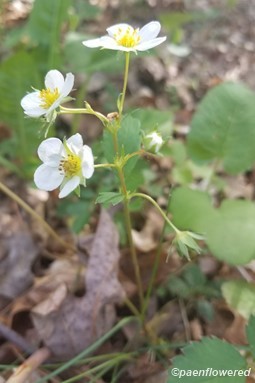
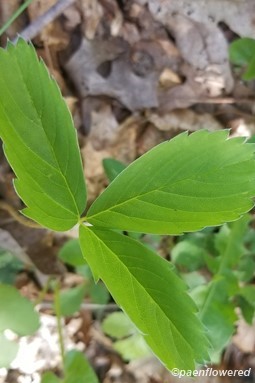
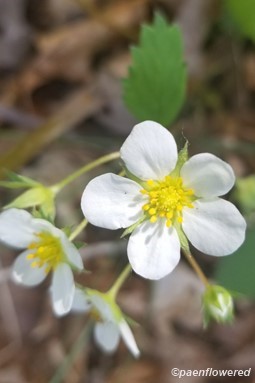
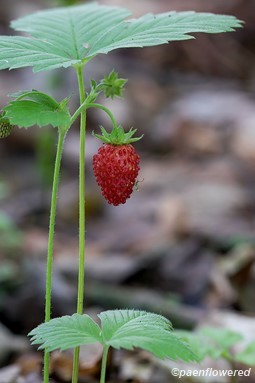
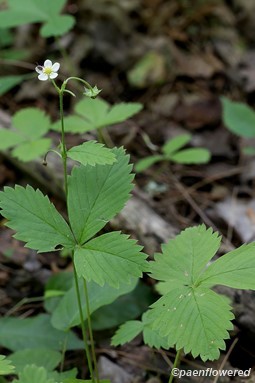




Comments
Have you spotted this plant in your area? We'd love to hear about your experience! Share your comments or questions about the plant below. Comments are moderated before posting.